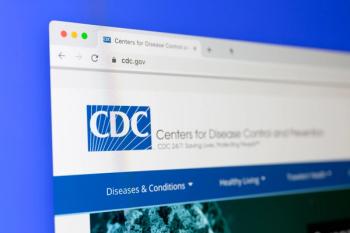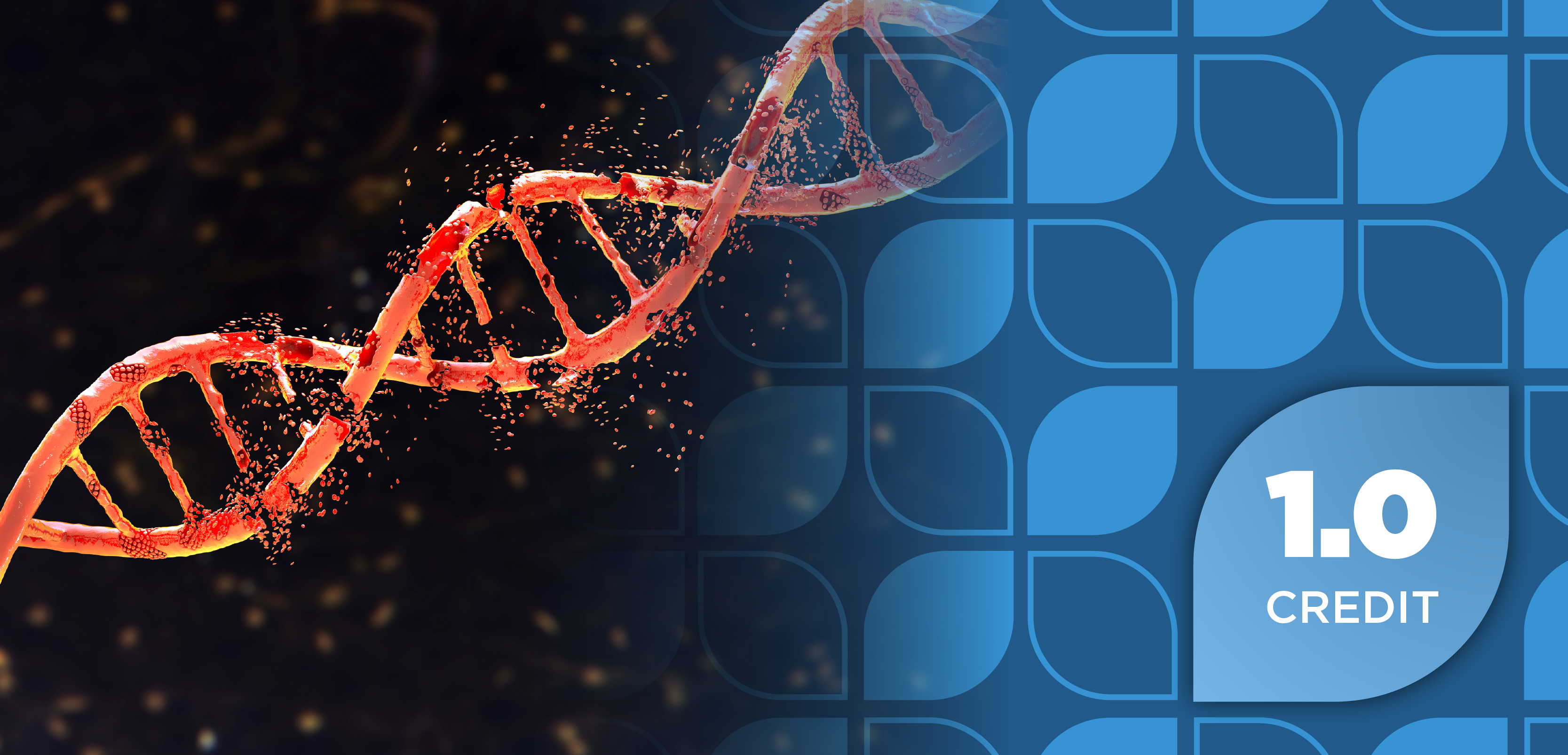Pharmacy Practice in Focus: Health Systems
- November 2025
- Volume 14
- Issue 6
Tips for Using AI Tools Responsibly During Pharmacy School
Key Takeaways
- AI tools are essential in pharmacy education, aiding in studying, clinical simulations, and exam preparation while enhancing communication skills.
- Students must recognize AI's limitations, verify AI-generated information, and maintain academic integrity in their work.
Student pharmacists should use practical tips to responsibly use artificial intelligence tools for studying, clinical simulations, exam preparation, and time management while ensuring ethical and effective usage.
Précis
Student pharmacists should utilize practical tips to responsibly use artificial intelligence tools for studying, clinical simulations, exam preparation, and time management while ensuring ethical and effective usage.
Introduction
The integration of artificial intelligence (AI) tools into pharmacy education is becoming increasingly important as the health care landscape rapidly evolves. As noted by Cain et al, “If we recognize a future workforce in which AI use is significant, the sooner students are taught how to navigate it through the lenses of their own judgment and clinical acumen, the better.”1 Therefore, student pharmacists must develop proficiency in using AI technologies, and pharmacy school provides an ideal environment to become familiar with these tools for a wide range of academic and study-related tasks.1 Although some argue that relying on AI could diminish critical thinking or lead to overdependence, there are many situations in which AI may potentially complement learning and free up cognitive space for complex problems.2
Students using AI will discover that it can quickly analyze, generate, and organize information; streamline workflow; and enhance verbal and written communication skills. Additionally, exposure to AI during pharmacy education will highlight its limitations, preparing students to educate patients and fellow health care professionals on the importance of verifying the authenticity and completeness of AI-generated information.
When choosing an AI platform, consider your individual needs and preferences, especially when deciding between free and paid versions. Although some platforms may offer more advanced features in their paid versions, many provide free options with robust capabilities. Tools such as Google Gemini, ChatGPT, Anthropic’s Claude, Microsoft Copilot, Google NotebookLM, and AI image generators can provide valuable support to students at various stages of their academic journey. Below is a collection of guidance on how to use AI effectively and responsibly.3
Clinical Case Simulations
As you prepare for objective-structured learning or clinical examinations and skills-based courses, AI platforms can generate a variety of patient case scenarios, giving you an opportunity to practice asking relevant and practical questions in a logical order. The following guidelines can help make the most of this use case:
- Be prompt-specific: When using AI tools, it is essential to craft specific prompts with clear and detailed instructions for the best results. AI prompts should avoid slang, assume no prior knowledge, and provide relevant details to avoid confusion. As a best practice, direct AI to use action verbs such as list or explain.
- Be case-specific: In the context of developing practice cases, include the pharmacy setting (eg, hospital vs community), medical conditions, and any other relevant patient-specific considerations (eg, past medical history, socioeconomic factors). Additionally, be specific by including the purpose of the case. Is it to assist with case-based exam questions, help generate verbal questions and answers, or focus on a specific aspect of a case (eg, drug interaction, adverse drug reaction, etc)? Example: “Develop a case scenario to help me prepare for a clinical encounter with a 65-year-old man admitted to the hospital setting for hypertensive urgency. The patient also has comorbid type 2 diabetes and a past medical history of a myocardial infarction 3 years ago. What are key pharmacy considerations to prepare for?”
- Include all pertinent, but not personal, information: As a health care professional, it is crucial that you omit any sensitive issues and personal data from AI prompts. When developing cases for simulations, request varying cases using unique demographics, laboratory results, and medications.
- Request evolving cases: Ask AI to simulate complex cases, such as when the patient’s condition progresses over time, or when alternative or second-line therapies may need to be considered. Example: “Create a complex medical case involving a 60-year-old woman with rheumatoid arthritis who initially presented with joint pain and stiffness, managed with first-line therapy. Over time, her symptoms progress despite adherence to the treatment plan.”
Study Guides and Study Reviews
Some tools provide an option to upload documents, allowing AI to analyze the content and respond with more specific answers. These platforms can transform lecture notes into study guides, flash cards, or podcasts, making complex concepts easier to understand. The following guidelines can help make the most of this use case:
- Specify the subject and topics: When requesting a study guide, clearly outline the subject and specific topics to be covered. Example: “Create a study guide for pharmacology focusing on the mechanisms of action for antihypertensive medications.”
- Seek summarization of lengthy materials: Ask AI to summarize the key points of a dense text or lecture notes. Example: “Summarize the main points of chapter 5 on drug metabolism into a concise study guide.”
- Request different formats: Ask AI to generate study guides in various formats, such as bullet points, tables, or flash cards. Additionally, AI can generate practice exam questions ranging in complexity to allow additional practice with the course material. Example: “Create 10 challenging multiple-choice questions, each with 4 answer choices, based on the given learning objective and course content.”
- Use Google NotebookLM’s Audio Overview: Upload study materials such as documents, slides, and full-text articles into NotebookLM, which creates an audio podcast based on the uploaded content. This AI tool uses 2 distinct voices in a dynamic conversation to summarize key points and highlight connections between topics. The length of the podcast may vary based on the content uploaded. As a frame of reference, a 10-page document produces approximately 10 to 15 minutes of audio.
Scheduling and Time Management
Time management is a common challenge when navigating pharmacy school. AI can assist with effective scheduling, allowing you to streamline activities, prioritize tasks, meet deadlines, and dedicate sufficient time to studying, working, and maintaining your well-being. The following 2 tips can help you best utilize AI for this:
- Create a personalized study schedule: Ask AI to develop a study timetable tailored to course requirements and personal commitments. For example, upload class and exam schedules, then request, “Create a study schedule for my pharmacology exam over the next 4 weeks, balancing study sessions with my class schedule.”
- Break down tasks into manageable steps: Use AI to break heavy workload projects into smaller, manageable tasks. Example: “Outline the steps to complete my research project on pediatric asthma management, including research, drafting, and revision phases over the next 8 weeks.”
Proofreading and Refining
Writing effectively requires attention to detail, and it is easy to make errors or overlook areas for refinement. AI tools, including specific writing assistants, can help polish writing by offering suggestions for improvements, analyzing text, and assisting with proofreading and formatting.
- Utilize grammar and spell check features: Use AI tools such as Grammarly or built-in spell checkers in word processors to catch basic errors. For example, input text and request, “Proofread this introduction email to my next pharmacy preceptor for grammar and spelling errors, ensuring it maintains a professional tone.”
- Request feedback on tone and style: Use AI to assess writing tone and style, ensuring they align with the intended audience. For example, ask, “Is the tone of this email appropriate for a professional audience? Suggest improvements if needed.”
- Use AI for structure and flow improvements: Request feedback on the overall structure and flow of documents. Example: “Provide feedback on the organization of this research paper and suggest revisions needed to improve its flow.”
- Incorporate AI images: AI image generators (eg, Canva AI, Craiyon) can enhance the visual appeal and design of presentations and newsletters.
Interview Preparation
Applying for prospective jobs, residencies, or fellowships can be quite stressful. AI platforms can help you enhance your preparation and build confidence for interviews.
- Simulate mock interviews: Use AI to generate common interview questions for pharmacy positions or residencies by uploading a job description and asking for anticipated questions. For example, request, “List the most common interview questions for a pharmacy intern role.” Then engage in role-playing with AI to practice answering both behavioral and situational questions by using a prompt such as, “Develop a mock interview scenario for an entry-level clinical pharmacy position.”
- Create a list of questions to ask the interviewer: AI can create thoughtful questions for interviews. Example: “Generate questions to ask during an interview for an ambulatory care–focused pharmacy residency, demonstrating my interest in the program.”
- Request feedback on responses: For example, ask AI, “Review my response to the question, ‘What makes you a good fit for this position?’ and suggest enhancements.” This can help identify areas for improvement.
Responsible AI Use
Engaging with AI thoughtfully requires recognizing its potential alongside its limitations. Although AI can assist with generating information, it does not replace human intelligence. Using AI responsibly can differentiate your work by incorporating reputable evidence, clinical judgment, critical thinking skills, and clinical reasoning. This approach demonstrates the ability to move beyond AI-generated content, applying perspective from a medication specialist to enhance the quality and depth of your work.
- Maintain academic integrity: You must adhere to your institutional and course guidelines regarding AI usage. If these guidelines are not explicit, proactively discuss with your course instructor or preceptor to determine when AI is appropriate to use. In some cases, it may be required or helpful to add a statement of transparency when an AI tool was used in any portion of the work. An example of a transparency statement may be, “This assignment was completed with assistance of an AI tool to help with generating an outline, drafting, and proofreading. All final content was modified after verification with sources provided in the references list.”
- Verify information from credible sources: Always cross-check AI-generated information with credible, reputable resources and ensure proper citation of your work. AI citation tools are not foolproof and require verification for accuracy and quality. Additionally, be aware of AI’s inherent biases and limitations, as it may produce fictional, erroneous, or unsubstantiated information in response to queries, a phenomenon known as artificial hallucination.4 Although these responses may appear articulate and accurate, they may lack the depth needed for a thorough understanding of complex concepts. Regularly cross-check the responses with reliable sources to verify accuracy and fill any gaps where a deeper comprehension is needed.
- Maintain an authentic voice in AI-assisted writing: It is essential to ensure that your authentic voice remains true in your writing. To achieve this, personalize content by incorporating authentic experiences, perspectives, or insights. Carefully review and thoroughly edit responses to match your voice, tone, and style. When in doubt, ask a peer or mentor to review any work that used AI to provide feedback, then adjust as needed. Many employers, faculty, and preceptors are aware of when you use AI tools, so it is important not to present work that appears inauthentic, plagiarized, or haphazardly written without support of credible references or evidence of your critical thinking.
- Use AI as a supplement rather than a substitute: Although AI can be a helpful tool, ensure that it complements your work rather than replaces your original ideas. A good rule of thumb is that AI should be a starting point for generating ideas or refining existing content, rather than relying on it as the final product. It is also important to understand that the AI output is only as accurate as the data it is given, meaning the breadth of the content depends heavily on the reliability of the input sources. Again, any information generated by AI should be verified using credible, reputable resources.
Conclusion
As the health care landscape evolves, it is becoming increasingly important for student pharmacists to gain exposure and familiarity with technologies, particularly AI tools. The strategies presented above illustrate how AI tools can be used throughout pharmacy school as study aids or supplemental resources to enhance written work. By using AI responsibly, students should aim to maintain an authentic voice and ensure their work reflects critical thinking and pharmacy expertise.
REFERENCES
1. Cain J, Malcom DR, Aungst TD. The role of artificial intelligence in the future of pharmacy education. Am J Pharm Educ. 2023;87(10):100135. doi:10.1016/j.ajpe.2023.100135
2. Lucas C. Can artificial intelligence teach students how to critically think? Pulses. March 7, 2023. Accessed September 18, 2025. https://pulsesrx.com/2023/03/07/can-artificial-intelligence-teach-students-how-to-critically-think/
3. Batson C, Mara D. The pharmacy students’ guide to artificial intelligence-AI. J Pediatr Pharmacol Ther. 2024;29(1):85-89. doi:10.5863/1551-6776-29.1.85
4. Kumar M, Mani UA, Tripathi P, Saalim M, Roy S. Artificial hallucinations by Google Bard: think before you leap. Cureus. 2023;15(8):e43313. doi:10.7759/cureus.43313
Conflicts of Interest: All authors have no conflicts of interest to disclose. This article was completed with the assistance of an AI tool for generating ideas, drafting, and proofreading. Authors reviewed and modified all final content, incorporating their knowledge and experience, along with the sources listed in the references.
Funding: This article received no specific grant from any funding agency in the public, commercial, or not-for-profit sectors.
Articles in this issue
Newsletter
Stay informed on drug updates, treatment guidelines, and pharmacy practice trends—subscribe to Pharmacy Times for weekly clinical insights.













































































































































































































